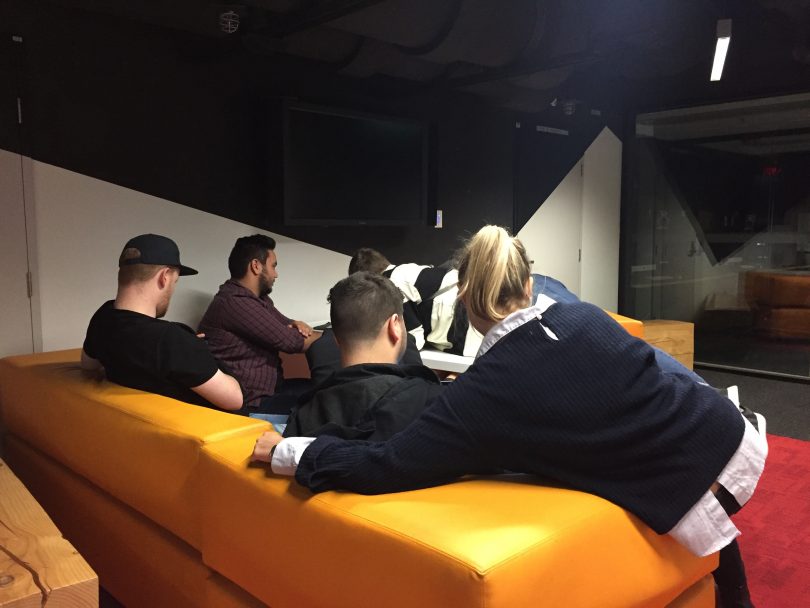Data from the new Household, Income and Labor Dynamics (HILDA) survey has shown younger Australians are choosing to live in the family home for longer.
The report, released earlier this week, showed a spike in the number of 22-25 year olds who are living in their parents’ house.
[infogram id=”australians_at_home_graph_1″ prefix=”Wvh” format=”interactive” title=”Aussies at home 1″]Luke Venditti, a 23-year-old certified book-keeper who is working full-time while finishing off a university degree, is one of these Australians.
“My parents haven’t given me any reason to move out and they let me do my own thing within reason,” he said. “It’s cheaper, easier to save, and I love to travel,”
“I don’t want to give up that lifestyle just yet,” he said. “I can’t afford to maintain it as well as paying for inner city rent, groceries, and electricity.”
“Those macchiatos and smashed avocados won’t pay for themselves,” he said.
Professor Roger Wilkins, Deputy Director of the HILDA Survey, said there is a range of reasons why more young people are choosing to stay in their family homes than ever before.
“I think more young people are going to university than ever before,” he said. “People are just doing things later in life and are starting their working lives at an older age.”
“We tend not to achieve economic independence until we finish our studies,” he said.
The survey showed unaffordable housing and expensive rent prices are driving younger Australians out of the market, with the proportion of adults under 40 who own the home they live in falling from 36% in 2002 to 25% in 2014.
[infogram id=”home_ownership_rates_by_sex_and_age_group” prefix=”Gl1″ format=”interactive” title=”Home-ownership rates by sex and age group”]Professor Wilkins is hopeful future young Australians can be independent out of home, but he said it will take policy action to improve housing affordability.
“It’s partly about improving the supply of housing where jobs are,” he said. “There’s no point making land available for development that’s a two-hour commute from jobs.”
“Increasing supply and increasing density of urban areas in the major cities is part of it, but it’s also about improving transport infrastructure,” he said. “That will help bring a larger geographic area into a respectable commuting distance.”
But it’s not only housing affordability that is preventing young Australians from moving out of home, with limited job opportunities another barrier.
“It’s so much harder to secure full time work, so we see a high rate of part-time employment and a lot of under-employment among people in their early twenties,” Professor Wilkins said.
Parents have also adapted to the current climate and understand their children often cannot afford to move out as soon as they turn 18.
“Parents are more accepting that their kids will be dependent on them for longer,” Professor Wilkins said. “They’re not putting as much pressure on the kids to move out as soon as perhaps was once the case.”
Another Melburnian still living at home is 23-year-old Laura Cesile.
“I simply can’t afford not to,” she said. “I’m a university student who works in retail- how on earth can I afford to live out of home?”
But while living at home eases the financial burden, it does compromise young adults’ privacy and independence.
“I have the best parents, but sometimes they drive me up the wall,” Laura said. “They have this unconscious belief that they are privy to every part of my life.”
“My mother worries when I don’t come home and will frequently message and call me on a night out,” she said. “And forget going home with someone.”
“Essentially, there’s very little privacy and I don’t feel like an adult under their roof,” she said.
Laura, like many other young Australians, is not content with staying at home for the rest of her life and already has plans in place to change her living arrangements.
“I’m trying very hard to save, and thankfully I have a sister of a similar age who is also saving,” Laura said. “We have plans to save as much as possible, buy a place together and rent it out for a while.”
“After a few years of having a full-time career, we’ll move in together,” she said. “But who knows when that will be!”
For more information about the HILDA survey, check out Claudia Long’s explainer piece for the City Journal called: The Good, The Bad and The HILDA (Part 1).







